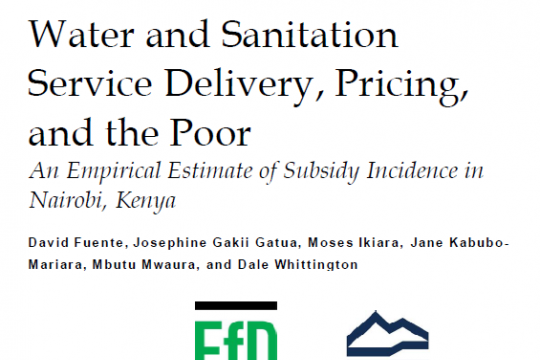The increasing block tariff (IBT) is among the most widely used tariffs by water utilities, particularly in developing countries. This is in part due to the perception that the IBT can effectively target subsidies to low-income households. Combining data on households’ socioeconomic status and metered water use, this paper examines the distributional incidence of subsidies delivered through the water tariff in Nairobi, Kenya. Contrary to conventional wisdom, we find that high-income residential and non-residential customers receive a disproportionate share of subsidies and that subsidy targeting is poor even among households with a private metered connection. We also find that stated expenditure on water, a commonly used means of estimating water use, is a poor proxy for metered use and that previous studies on subsidy incidence may dramatically underestimate the magnitude of the subsidy delivered through water tariffs. These findings have implications for both the design and evaluation of water tariffs in developing countries.
Water and Sanitation Service Delivery, Pricing, and the Poor: An Empirical Estimate of Subsidy Incidence in Nairobi, Kenya
Country
Sustainable Development Goals




